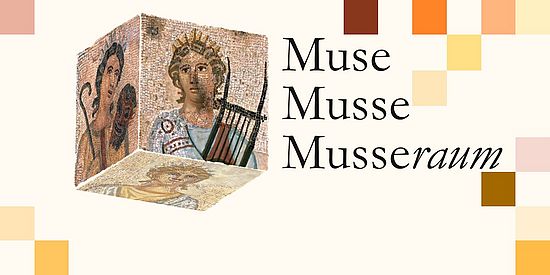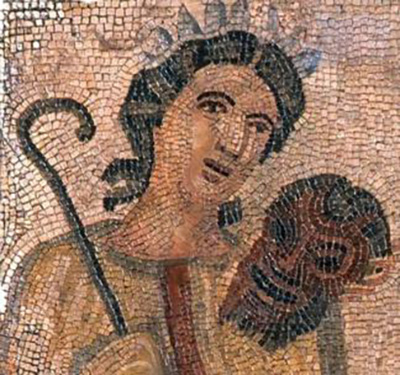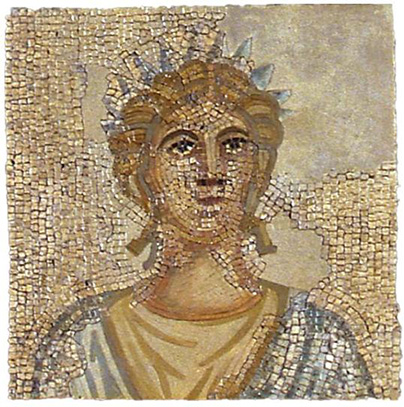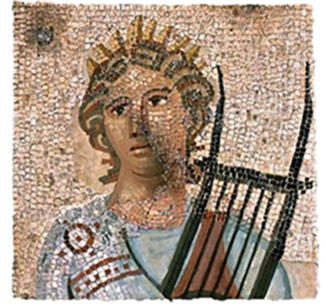
SNF research project Muse - Musse - Musseraum
Project description
Project management: Prof. Henriette Harich-Schwarzbauer (funded by the Swiss National Science Foundation; duration: 3 years; start: January 1, 2019).
The project Muse - Musse - Musseraum examines, on the basis of three historically as well as literarily significant authors, how a 'rupture' is reflected differently in each of their literary works. With Ausonius, Sidonius Apollinaris and Enea Silvio Piccolomini, three authors - of late antiquity and humanism - are selected who signal a biographical 'break' for political and religious motives, respectively, and (re)formulate their literary work accordingly. For the work analysis of the authors in question, Muse - Musse - Musseraum argues for a procedure that considers the aforementioned authors under the working term 'author profile' in both a specific literary and socio-historical setting. In doing so, the guidelines of a biographically arguing research will be questioned. It will be examined how programmatic statements - preferred locations are paratexts - are acted out in the work or in parts of the work, but also how they are subverted. The literary œuvre, which is defined as Musseraum, was, according to the premise, shaped by the three selected authors themselves and purposefully.
In the project Muse - Musse - Musseraum, instances of literary production and the literary framework of action of the three authors are considered, whereby the latter, the Musseraum, is understood as a poetic space. The climax suggested in the title is significant insofar as a 'rupture' inscribed in the work is to be made visible via this Musseraum, understood in its varieties, and thus examined for symptoms of a work politics.
The choice of the authors in question is central to the research project. All three are Christians, though being Christian implies different things for each of them because of their lifetimes, circumstances, cultural contexts, and positioning vis-à-vis the (pagan) literary tradition. The research project sheds light on the period from the late fourth century (Ausonius) to the later fifth century (Sidonius Apollinaris), a period of institutional and cultural consolidation of Christianity. For the 15th century, the choice fell on Enea Silvio Piccolomini, poeta laureatus in a courtly culture, secretary of the Council, and finally pope. The decision for these three exemplary authors wants to lead to fundamental statements about the authors, but also about the epochs in question. The aim is to gain a differentiated picture of writing strategies and work configurations of authors of late antiquity and humanism, who undoubtedly knew revisionist literary practices of a Cicero, an Ovid, later an Augustine or also a Petrarch - to name only the most important model authors - and pursued them in different ways for their own claims.With the specific focus of late antiquity - humanism chosen here, which has received less attention in research than the focus of 'classical' antiquity - humanism, the project intends to generate substantial added value. The connection to research topics on current questions in literary studies and history is given in the best possible way. No less profit is expected for research in the social and cultural sciences, especially since the study is structured across epochs and will also take comparative aspects into account.

The works of Ausonius are numerous and diverse. But to what extent are they, with their paratexts, their allusions and cross-references, also a work? For whom are they possibly so, and what is the significance here of the author, who repeatedly makes his biography and his cultural authority into a literary object?
In a narrower sense, these questions concern the rhetoric professor, politician, and poet Ausonius, who is of interest to us for (literary) historical reasons. In a broader sense, however, they also concern the phenomenon of how late and post-antique authors perceive themselves in a literary epoch and in a particular cultural spatium, or seem to structure their work overtly or covertly in accordance with it. This is precisely the question of must-space, a space that is spanned, so to speak, by the vectors of historical setting, literary fiction and structure, and reception.
For Ausonius, this must be examined starting from the styles and genres to which he turns and which he reformulates.
Project by Dr. Markus Kersten

The project focuses on the Carmina of the Gallo-Roman late antique author Sidonius Apollinaris, whose literary work is less influenced by Christian thought than by pagan education. The poems are public and situated in a highly political context, insofar as they are panegyrici on Roman emperors. Thus, when the author uses ancient myths to praise Roman rulers, it is by no means a matter of secretly lived-out pagan nostalgia, but rather a consciously demonstrative treatment of ancient literary models.
The aim of this dissertation project is the analysis of the myth-exempla inserted by Sidonius into the Carmina with regard to the question to what extent ancient mythological inventory and pagan gods fit into the Christian context and whether it is an inappropriate interlude that is available as poetic material alongside Christian educational material, or whether it is to be evaluated as constitutive for Sidonius' poetic concept. It should also be clarified whether Sidonius confines himself completely to pagan thought or whether he also negotiates Christian themes subcutaneously. It also proves worthwhile for researchers to pursue more extensively the questions of intertextuality, variance, and transformation: To what degree are the mythological interludes a literary play at all, and to what extent are they serious recourse to literary models? What is Sidonius' literary treatment of these models? What and how does he receive, how does he process the material and make it useful for his context?
Dissertation project by MA Ann-Kathrin Stähle

The poetic œuvre of Enea Silvio Piccolomini is overshadowed by his extensive and powerful prose work and has rarely attracted the attention of interpreters. In contrast, the title of poeta seems to have been particularly important to the author in constituting his "authorial profile" and must therefore be taken seriously.
The project will explore the question of how a young man in the first half of the 15th century could succeed in constituting himself as a poet. In doing so, it will not only be necessary to examine from a literary studies perspective which literary models and traditions the young poet oriented himself to and which literary genres he used, but also to illuminate from a cultural studies perspective how he conceived his own work, which programmatic statements he made, how he defined himself through a social network, how he created must spaces in his work, which biographical narratives he used, and which apologetic strategies he pursued.
Project by Dr. Christian Guerra
Project management
Project team
Contact
Alexandra Giannotta
Project Assistant
Faculty of Humanities and Social Sciences
Department of Ancient Civilizations
Latin Philology
Petersgraben 51
4051 Basel
Switzerland
Image credit:
Musenmosaik aus der Neustrasse, Trier, RLM, Inv. 1941,1520 (detail, edited)
© GDKE/Rheinisches Landesmuseum Trier, Photo: Th. Zühmer http://www.landesmuseum-trier.de
Quick Links
